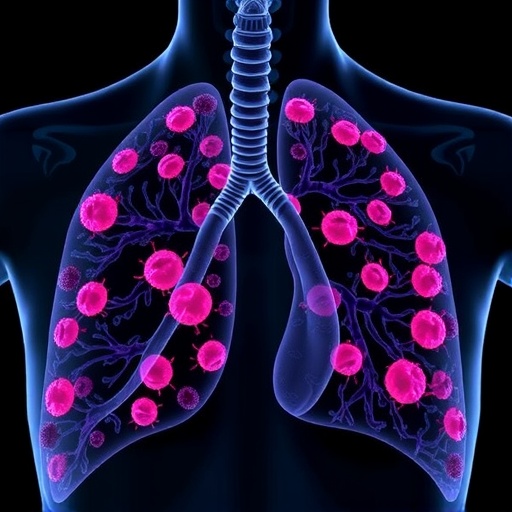
Credit: Photo by ©istock.com/Pitju
Opioid pain relievers can be extremely effective in relieving pain, but can carry a high risk of addiction and ultimately overdose when breathing is suppressed and stops. Scientists have discovered a way to separate these two effects — pain relief and breathing — opening a window of opportunity to make effective pain medications without the risk of respiratory failure. The research, published today in Cell, was funded by the National Institute on Drug Abuse (NIDA), part of the National Institutes of Health.
Opioid medications suppress pain by binding to specific receptors (proteins) in the brain; these same receptors also produce respiratory suppression. However, the way these receptors act to regulate pain and breathing may be fundamentally different. Studies using mouse genetic models suggest that avoiding one particular signaling pathway led to more favorable responses to morphine (pain relief without respiration effects). The investigators then explored if they could make drugs that would turn on the pathways associated with pain relief and avoid the pathways associated with respiratory suppression.
"We are pleased to have uncovered a potential new mechanism to create safer alternatives to opioid medications, ones that would be far less likely to cause the side effects that lead to overdose deaths associated with the misuse of opioids," said NIDA Director Nora D. Volkow, M.D. "We are excited that basic research on how opioid drugs work in the brain has led to this novel approach, and that we continue to make critical progress in this area."
How the pathways split following receptor activation is referred to as biased signaling. The study showed that as the degree of bias (divergence) increased, so too did the ability of an opioid to reduce pain in mice without affecting breathing. Similarly, compounds that favor the breathing pathway produced more respiratory side effects at lower doses. Ultimately, opioids with a larger divergence (bias factor) had a larger margin of safety, or therapeutic window, opening up an opportunity for medication intervention.
"In this study, we demonstrate that this divergence, which we call biased agonism, is not an 'all or none' phenomenon, but rather exists as a spectrum. As such, if a small degree of divergence between pathways in cell culture produces a minimal benefit in living organisms, there is potential to chemically improve the signaling bias and subsequently improve the therapeutic safety window," said Laura M. Bohn, Ph.D., principal investigator on the study from The Scripps Research Institute.
It is unclear how these divergent pathways affect other side effects of opioids, including addiction. However, this finding could represent a new direction in the pharmaceutical development of safer alternatives to current opioid pain relievers, which is part of the NIH initiative to address the opioid crisis.
Schmid, et al. Bias factor and therapeutic window correlate to predict safer opioid analgesics. Cell. November 16, 2017.
###
About the National Institute on Drug Abuse (NIDA): The National Institute on Drug Abuse (NIDA) is a component of the National Institutes of Health, U.S. Department of Health and Human Services. NIDA supports most of the world's research on the health aspects of drug use and addiction. The Institute carries out a large variety of programs to inform policy, improve practice, and advance addiction science. Fact sheets on the health effects of drugs and information on NIDA research and other activities can be found at http://www.drugabuse.gov, which is now compatible with your smartphone, iPad or tablet. To order publications in English or Spanish, call NIDA's DrugPubs research dissemination center at 1-877-NIDA-NIH or 240-645-0228 (TDD) or email requests to [email protected] Online ordering is available at drugpubs.drugabuse.gov. NIDA's media guide can be found at http://www.drugabuse.gov/publications/media-guide/dear-journalist, and its easy-to-read website can be found at http://www.easyread.drugabuse.gov. You can follow NIDA on Twitter and Facebook.
About the National Institutes of Health (NIH): NIH, the nation's medical research agency, includes 27 Institutes and Centers and is a
component of the U.S. Department of Health and Human Services. NIH is the primary federal agency conducting and supporting basic, clinical, and translational medical research, and is investigating the causes, treatments, and cures for both common and rare diseases. For more information about NIH and its programs, visit http://www.nih.gov.
NIH…Turning Discovery Into Health®
Media Contact
NIDA Press Office
[email protected]
301-443-6245
http://www.nida.nih.gov
Original Source
https://www.drugabuse.gov/news-events/news-releases/2017/11/separating-side-effects-could-hold-key-safer-opioids





